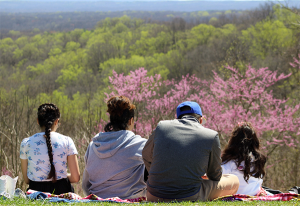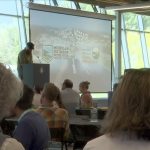
Indiana’s Outdoor Revival: A Fresh Start for Attendees and Nature Enthusiasts
Indiana’s upcoming Welcome Weekend, marked by free admission to all Indiana State Parks on May 4, signals more than just a seasonal event—it represents a thoughtful strategy to rejuvenate interest in the outdoors, enhance community engagement, and provide accessible recreation opportunities for residents and visitors alike. As the Indiana Department of Natural Resources (DNR) gears up to welcome families, outdoor enthusiasts, and first-timers, this initiative invites us to reimagine the role of state parks in a post-pandemic era where the outdoors have become a sanctuary for mental health, physical exercise, and community bonding.
Indiana State Parks Free Admission: A Catalyst for Community Engagement and Tourism
The decision to offer free admission on May 4 is a multifaceted one. At its heart, this initiative is designed to reintroduce people to the beauty, history, and recreational opportunities available across Indiana’s sprawling natural reserves. Free admission days have historically been effective in drawing larger crowds, especially among populations that might otherwise avoid the expense of a day’s outing. In Indiana’s case, this gesture not only welcomes back longtime visitors but also invites newcomers to explore the rich tapestry of natural resources maintained within the state park system.
Encouraging a Healthy and Active Lifestyle Through Outdoor Engagement
By eliminating the entry fee, the Indiana DNR is removing a barrier to entry, which in turn encourages more frequent outdoor visits. This opportunity is particularly significant in our current era where lifestyle-related health challenges continue to rise. With increased time spent outdoors, individuals are more likely to engage in physical activities such as hiking, cycling, bird watching, and camping. The benefits of fresh air and natural surroundings can lead to reduced stress, improved cardiovascular health, and enhanced mental well-being. As public health advocates emphasize the importance of physical activity, state parks serve as a natural remedy that nurtures both body and soul.
Indiana Camping Reservations Extended: A Smart Move for Nature Lovers
Another compelling development is the updated policy regarding campground reservations. Beginning April 30, campers can now reserve a site until 11 p.m. ET on the day of their arrival, extending the previous cutoff time from 2 p.m. This change is particularly advantageous for those who decide on a whim to embrace nature’s call. The flexibility in reservation times mirrors modern lifestyles where spontaneity and last-minute travel plans are increasingly common. Such an approach not only caters to busy families and adventure seekers but also optimizes the overall park attendance experience, ensuring that no enthusiastic visitor is turned away due to inconvenient booking windows.
Addressing the Needs of Overnight Campers and Weekend Getaways
The extension of the reservation window is a smart move that acknowledges the varied schedules of Indiana residents. For many, the rigid afternoon cutoff could be a stumbling block for participate in camping experiences, particularly when last-minute travel decisions are influenced by weather changes or personal commitments. By extending the booking time until late evening, the Indiana DNR is sending a clear message: nature is open to everyone, regardless of how late your decision might be. This modernized approach to campground reservations supports a more inclusive and dynamic outdoor culture, empowering individuals to seize the moment when the urge to explore hits.
Exploring Diverse Outdoor Activities: A Festival of Nature, Education, and Community
Welcome Weekend is not just about access—it’s also about opportunity. Each park has curated special activities that cater to a broad range of interests. For instance, Indiana Dunes State Park will host a fungi walk, which is an exciting educational experience that introduces visitors to mycology and the essential role fungi play in ecosystem health. Such activities invite park-goers to deepen their appreciation of nature by learning about the often-overlooked aspects of the environment.
Fungi Walks and the Importance of Ecosystem Education
The fungi walk at Indiana Dunes State Park is a prime example of how educational initiatives can be integrated into recreational outings. The journey through nature to observe diverse fungi species not only helps in understanding the ecosystem’s complex interdependencies but also emphasizes conservation’s critical role. This kind of interactive learning breaks down the barriers between science and everyday life, making natural history accessible and engaging for people of all ages and backgrounds.
By integrating educational experiences such as fungi walks, state parks transform into living classrooms. They serve a dual purpose: providing a much-needed respite from the digital noise of everyday life while also imparting valuable ecological knowledge. Initiatives like these can inspire community-led efforts towards environmental protection and resource conservation long after the days of free admission have passed.
Campfire Building Classes and Backyard Hummingbird Habitats
Adding to the diversity of outdoor experiences, Chain O’Lakes State Park is offering a campfire building class. Campfires have long been synonymous with storytelling, community bonding, and shared experiences in the great outdoors. Learning the art of building a safe and effective campfire is not only practical but also enriches the camping experience, making it more interactive and culturally significant. This tradition carries forward a legacy of shared knowledge passed down through generations, reinforcing the connection between modern participants and timeless outdoor traditions.
Moreover, the talk at Fort Harrison State Park focusing on methods to invite hummingbirds to your backyard further exemplifies the blend of recreation and practical knowledge. Hummingbirds, symbols of beauty and resilience, are fascinating creatures whose presence can transform a backyard into a haven of natural wonder. These types of initiatives empower individuals to cultivate their own ecosystems at home, fostering a deeper bond between urban living and natural conservation.
Long-Term Impact on Indiana Tourism and Local Economies
This strategic move to offer free admission on Welcome Weekend dovetails with broader state initiatives aimed at boosting tourism and supporting local economies. In a time when many regions are seeking ways to revive local tourism, such invitations to natural spaces can serve as a powerful draw. Local businesses near state parks, including restaurants, inns, and shops, are likely to experience a surge in patronage as visitors extend their day trips into overnight stays or weekend excursions.
Boosting Local Business Through Increased State Park Visits
The ripple effect of higher visitation rates to state parks extends well beyond the park boundaries. When more tourists visit a region, local economies benefit from increased spending at nearby attractions, retail outlets, and service providers. The free admission initiative can be seen as a catalyst for economic revitalization in parts of Indiana that rely heavily on tourism. Small businesses, often the backbone of local communities, may see improved fortunes during the annual park season as visitors dine, shop, and stay local.
Furthermore, the introduction of engaging, free events helps position Indiana as a progressive destination for eco-tourism and outdoor recreation. It encourages a sustainable model of tourism that prioritizes ecological conservation while ensuring that economic benefits reach a wide spectrum of community members. This integrated approach is essential as communities across the nation seek to balance economic growth with environmental stewardship.
Breaking Down Barriers: Accessibility and Inclusiveness in Outdoor Recreation
The welcoming nature of Indiana’s state parks on May 4 demonstrates the DNR’s commitment to accessibility. By eliminating entry fees for one day, the department is taking concrete steps to ensure that people from all walks of life, irrespective of their economic background, can connect with nature. In today’s society, where disparities in access to public spaces can exacerbate social inequalities, initiatives that promote free access are not just commendable—they’re necessary.
Creating Inclusive Outdoor Environments for All Indiana Residents
Accessibility in outdoor spaces is more than a matter of policy; it’s about creating an environment where every individual feels welcome and valued. Many individuals, particularly those from economically challenged backgrounds, might feel alienated by even minimal fees at state parks. The free admission event is a move towards leveling the playing field and ensuring that the intrinsic benefits of the outdoors—physical health, mental well-being, and environmental education—are accessible to everyone.
Such initiatives foster a sense of community and shared responsibility. When people see that their state is investing in accessible recreational spaces, it imbues them with a sense of pride and belonging. The collective act of enjoying nature together can break down social barriers and promote harmonious coexistence. In a broader sense, these actions contribute to the overall social fabric by encouraging active community participation and connectedness.
Future Perspectives: The Role of Policy in Shaping Sustainable Outdoor Recreation
As we reflect on the various layers of impact that the free admission and extended camping reservation policies carry, it is clear that thoughtful policy changes can have profound effects on the community. Local governments and natural resource departments best set an example by designing policies that bring tangible benefits to both the environment and the populace. Today’s forward-thinking decisions serve as a blueprint for future initiatives, ensuring that public natural spaces remain vibrant, accessible, and sustainable.
Policy Innovations and Their Impact on Conservation Efforts
The current policies adopted by the Indiana DNR are a testament to the power of innovation when it comes to public resource management. By easing restrictions and incentivizing nature-based activities, these policies encourage a broader segment of the population to appreciate and protect the natural environment. This upward trend in public interest in environmental conservation is crucial in an era marked by ecological uncertainties. State parks not only serve as venues for recreation but also as living laboratories for conservation, fostering a deeper appreciation for the delicate balance within natural ecosystems.
Looking forward, it is imperative that policymakers continue to innovate in ways that encourage public engagement with nature while safeguarding these treasures for future generations. Enhanced public-private partnerships, additional educational programming, and further technological integrations—such as interactive park maps and real-time event updates—could further enrich visitors’ experiences. Ultimately, a sustainable model of outdoor recreation demands both careful stewardship of natural resources and policies that evolve to meet the community’s changing needs.
Conclusion: A Promising Future for Indiana’s State Parks and Outdoor Adventures
The upcoming Welcome Weekend and the associated policy enhancements reflect a broader commitment to revitalizing Indiana’s outdoor spaces. Free admission, extended campground booking hours, and diverse educational events all point towards an inclusive, community-focused vision of state parks that goes beyond mere recreation. This model paves the way for further innovations in environmental stewardship and public engagement, ensuring that future generations can enjoy the natural beauty and ecological richness that Indiana has to offer.
As an avid traveler, outdoor enthusiast, and supporter of community-centric policies, I view these initiatives as crucial steps toward a more inclusive and sustainable future for public recreation. Indiana’s efforts serve as an inspiring example for other states aiming to bolster outdoor tourism, empower local economies, and promote healthy, active lifestyles. Let us celebrate this proactive approach, explore our state parks with renewed vigor, and support policies that make the outdoors a shared, accessible space for everyone.
In these times when our connection with nature is more essential than ever, Indiana’s Welcome Weekend stands as a beacon of hope and possibility. It calls on visitors to step out, explore, learn, and ultimately, foster a deeper relationship with the natural world. Whether you are a seasoned camper or a curious newcomer, there has never been a better moment to embrace the outdoors and discover the remarkable experiences that await in Indiana’s state parks.
Originally Post From https://www.wrtv.com/news/local-news/indiana-state-parks-to-offer-free-admission-on-may-4-for-welcome-weekend
Read more about this topic at
FREE Admission – Access for All
Hours & Admission | Wadsworth Atheneum Museum of …


